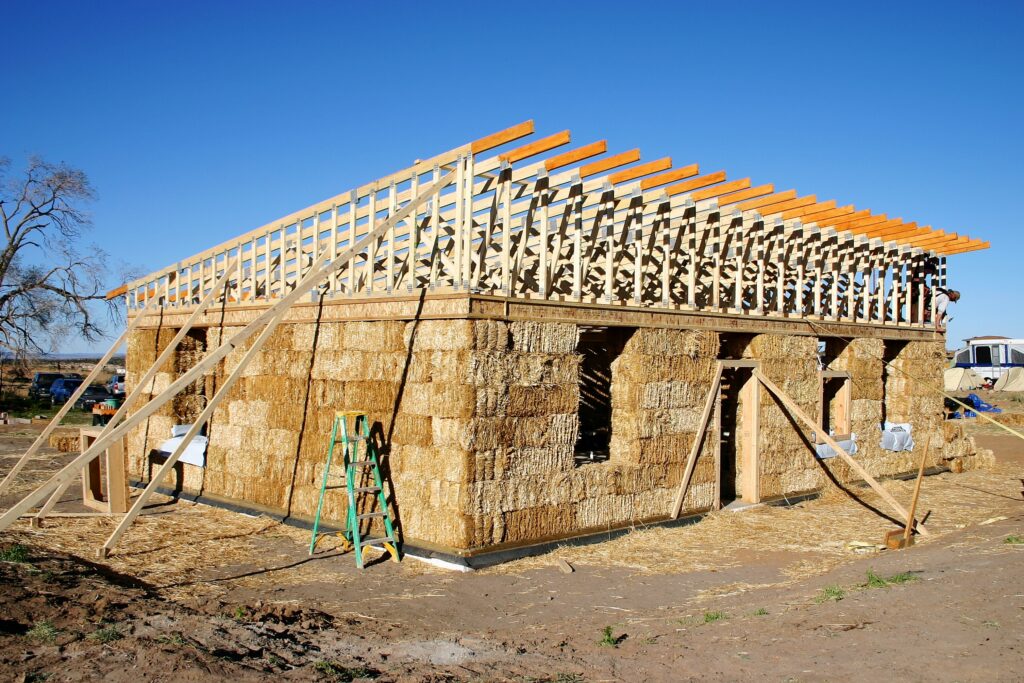
| Location | Hotevilla, Arizona, USA |
| Date | 2005 |
| Organization | Red Feather Development Group |
| Client | Tenakhongva family |
| Architect | Nathaniel Corum |
| Structural Engineer | Beaudette Consulting Engineers |
| Electrical Engineer | Energy A.D |
| Construction | Volunteer labor |
| Major Funding | USDA Home Mortgage, Red Feather Development Group |
| Cost | $79,200 |
| Area | 1,320 sq. ft./122 sq. m |
It has been called a quiet crisis: According to US census figures, one in eight Native Americans lives in overcrowded or substandard housing, nearly three times the national average.
It is estimated that anywhere from 90,000 to 350,000 Native Americans, nearly half of them children, are homeless or live in substandard conditions. In severe cases 20 to 25 people live together in homes with as few as three bedrooms. And the complexity of financing construction on tribal lands means the waiting list for federal housing assistance is much longer than average.
About 10 years ago Robert Young, the owner of a sportswear company, founded Red Feather Development Group to help address substandard living conditions on reservations. Appalled to see families “stacked up like cord wood” in rundown trailers and rental units—many without running water or electricity—he organized volunteers to make home repairs and build wheelchair ramps, small fixes that helped establish trust and allowed him to get to know the community and its needs. Eventually he and volunteers built their first house, a small kit home for Lakota elder Katherine Red Feather, for whom the organization is named.
In 1996 the federal government passed the Native American Housing Assistance and Self-Determination Act, which eliminated assistance programs and replaced them with a single block grant. But as the group began to understand the issues facing tribal communities, it felt the solution depended less on block grants and more on finding a low-cost housing type that would allow tribal members to provide for themselves. The group’s search led it to the BASIC Initiative of the College of Architecture and Urban Planning at the University of Washington, where students and faculty suggested a surprisingly indigenous solution: straw-bale construction. “It’s like Lego for adults,” says Young, who was drawn to the approach by its simplicity. First you lay the foundation. Then you stack hay bales like bricks to form walls. Finally, you seal the bales with stucco. In order to bear the weight of the structure, the hay must be tightly compressed, and the best bales would be free of seeds and weeds and composed of fresh, long, thick uncrushed straw to prevent rot. For this reason Red Feather buys its bales from a Navajo supplier who produces them specifically for construction purposes.

In addition to homes, the group has used straw bale to construct literacy centers and other community structures. Here, Red Feather volunteers plaster a straw-bale wall for an environmental research center on the Turtle Mountain reservation in North Dakota. Red Feather Development Group
A two-bedroom home costs as little as $45,000, including plumbing and other fixtures, and can be built in four weeks, Young says. The thick walls insulate against extreme weather, saving money on heating bills—no small expense for a family living at or below the poverty line. Deep window wells, window seats, rounded corners, and contemporary, open plans lend a sense of comfort and warmth to an otherwise basic layout.
Red Feather first began experimenting with the approach five years ago, working with the university. Since then it has worked with other institutions to build six homes, including the House on the Crow Reservation and the Hopi Nation Elder Home, shown here. The organization has also built a literacy center and a study hall from straw bale on reservations in North Dakota and Montana. With the addition of Rose Fellow architect Nathaniel Corum to their staff, the group has begun to explore what Corum calls “agritecture,” using materials such as carpeting made from corn husks and particle board made from compressed sunflower seeds. Corum also has helped Red Feather standardize, simplify, and develop educational materials so families can adapt the construction technique for building their own houses.
While the waiting list for public-housing assistance remains long, some families are adopting the Red Feather model. “We lost our family home 13 months ago. Four of us built a straw structure, 10 by 30 feet (three by nine m) with posts for roof support,” wrote one tribal member in an unsolicited e-mail to the organization. “Your Website gave us the inspiration to provide for ourselves when we could not get any support or help from our local Indian Housing Authority.”


The Hopi Nation Elder Home under construction. Above, Red Feather Development Group; below, Jonathan Corum
















READ OR LEAVE A COMMENT